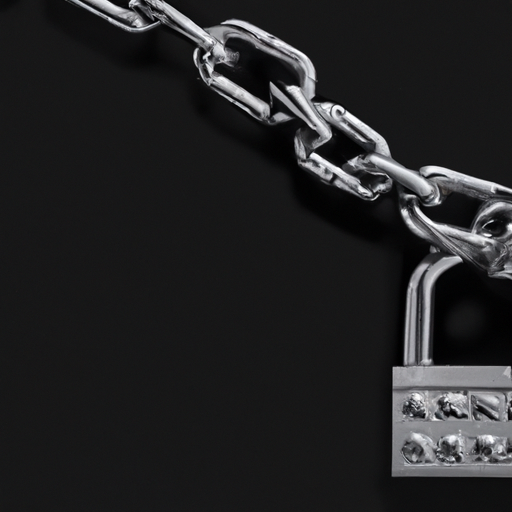How Can Businesses Protect Against Insider Trading Using Cybersecurity Measures?
Insider trading can be a significant threat to businesses, causing financial loss and damage to their reputation. In order to safeguard against this risk, it is essential for companies to implement robust cybersecurity measures. By employing advanced technologies and rigorous protocols, businesses can effectively detect and prevent insider trading activities. Through this proactive approach, organizations can defend their sensitive information, maintain trust with stakeholders, and ensure a secure and transparent environment for conducting business.
Understanding Insider Trading
Definition of Insider Trading
Insider trading refers to the buying or selling of securities (such as stocks, bonds, or options) based on non-public information about the company. This sensitive information is typically known only to key individuals within the organization, such as executives, directors, or employees with access to confidential data. Insider trading is considered illegal in most jurisdictions as it undermines the fairness and integrity of the stock market.
Types of Insider Trading
Insider trading can be categorized into two main types: legal and illegal. Legal insider trading occurs when company insiders, such as executives or directors, buy or sell shares of their own company’s stock on the open market following the proper regulatory procedures. Illegal insider trading, on the other hand, involves the use of non-public information to gain an unfair advantage in trading. This can include trading stocks based on upcoming mergers, acquisitions, earnings announcements, or other material non-public information.
Consequences and Impact
The consequences of insider trading can be severe for both individuals and businesses. From a legal standpoint, individuals found guilty of insider trading may face significant fines, imprisonment, or both. Furthermore, the reputational damage can be long-lasting, affecting the individual’s career prospects and tarnishing the company’s image. Insider trading can also harm other investors by distorting market prices, eroding trust in the financial system, and creating an unfair playing field. To protect against insider trading, businesses need to adopt effective cybersecurity measures.
Importance of Cybersecurity Measures
Why Cybersecurity is Crucial
Cybersecurity is crucial for protecting businesses from a wide range of threats, including insider trading. With the increasing reliance on technology and the digitization of sensitive information, companies are more vulnerable than ever to data breaches and unauthorized access. A robust cybersecurity framework helps safeguard a company’s valuable assets, including trade secrets, financial data, and customer information. By implementing appropriate cybersecurity measures, businesses can prevent unauthorized individuals from accessing confidential information and reduce the risk of insider trading.
Risks of Insider Trading in the Digital Age
The digital age has brought about new risks and challenges when it comes to insider trading. With the vast amount of data stored electronically, insiders have more opportunities to gather and exploit non-public information. Hackers and cybercriminals also target organizations to gain access to sensitive information that can be used for insider trading purposes. Insider trading in the digital age is not limited to traditional stock trading; it can extend to other areas such as cryptocurrency markets, where a breach of a digital wallet or exchange can lead to significant financial losses.
Role of Cybersecurity in Preventing Insider Trading
Implementing robust cybersecurity measures is essential in preventing insider trading. By securing internal systems, encrypting sensitive data, and implementing access controls, businesses can limit the potential for unauthorized individuals to access valuable non-public information. Real-time monitoring, employee behavior analytics, and audit trails help identify suspicious activities and provide evidence in case of insider trading investigations. Additionally, employee training programs and clear policies and procedures further reinforce the importance of cybersecurity and create a culture of trust and ethics.
Identifying Insider Threats
Recognizing Potential Insider Threats
To protect against insider trading, businesses need to be able to recognize potential insider threats within their organization. This involves identifying individuals who have access to non-public information and the potential motivation to misuse it for personal gain. Insiders to watch out for include executives, directors, employees in sensitive positions, or those with access to critical financial or strategic information. It is important not to single out individuals based on suspicion alone, but to use behavioral indicators and monitoring systems to assess potential risks.
Behavioral Indicators of Insider Trading
Certain behavioral indicators may suggest that an individual is engaging in insider trading. These can include sudden changes in trading patterns such as excessive buying or selling of securities, especially if it coincides with the release of material non-public information. Other red flags may include a sudden change in lifestyle or purchases, unusual investment decisions, or involvement in activities that create conflicts of interest. While these indicators alone are not proof of insider trading, they warrant further investigation to assess any potential wrongdoing.
Monitoring Employee Activities
Monitoring employee activities is a critical part of identifying insider threats. This can involve implementing technologies such as network monitoring tools, data loss prevention systems, and user behavior analytics software. These tools provide insights into employee actions, such as accessing or copying sensitive information, unusual login patterns, or attempts to bypass security controls. Regular reviews of audit trails and log analysis can help identify any suspicious activities and enable timely response and investigation.
Implementing Strong Access Controls
Role-Based Access Control (RBAC)
Role-Based Access Control (RBAC) is a cybersecurity measure that regulates user access to information based on their roles and responsibilities within the organization. By assigning specific permissions and privileges to each role, RBAC ensures that employees can only access the information necessary for their job functions. This helps prevent unauthorized access to sensitive information and reduces the risk of insider trading. RBAC also simplifies access management processes, making it easier to grant or revoke access as needed.
Two-Factor Authentication (2FA)
Two-Factor Authentication (2FA) is an additional layer of security that enhances access controls. In addition to a username and password, 2FA requires users to provide a second form of verification, such as a fingerprint, facial recognition, or a unique code sent to their mobile device. This adds an extra barrier for unauthorized individuals trying to gain access to systems or data. Implementing 2FA can significantly reduce the risk of insider trading by ensuring that only authorized individuals can access sensitive information.
Strong Password Policies
Implementing strong password policies is another important aspect of access control. Businesses should enforce password complexity requirements, such as minimum length, the inclusion of alphanumeric and special characters, and periodic password changes. Employees should be educated on the importance of creating unique and strong passwords and avoiding the reuse of passwords across different platforms. By using strong passwords, businesses can protect against unauthorized access and make it more challenging for insiders to exploit sensitive information.
Secure Remote Access
In today’s digital landscape, remote access is common, particularly with the rise of remote work. However, this presents additional cybersecurity risks, including insider threats. To mitigate these risks, businesses should implement secure remote access solutions that require strong authentication and encrypt data transmission. Virtual Private Networks (VPNs), Secure Socket Layer (SSL) technology, and multi-factor authentication can help secure remote connections and limit the potential for unauthorized access.
Securing Internal Systems
Regular Software Updates
Regular software updates are crucial for securing internal systems and protecting against insider threats. Software vendors release updates that often contain security patches to address vulnerabilities that can be exploited by cybercriminals. By regularly updating operating systems, applications, and security software, businesses can ensure that their systems have the latest protections in place. Failure to apply updates can leave systems susceptible to attacks and provide openings for insider threats to exploit.
Endpoint Security Solutions
Endpoint security solutions play a vital role in securing internal systems against insider threats. These solutions protect individual devices, such as laptops, desktops, or mobile devices, from malware, unauthorized access, and data leakage. Endpoint security software can include features like antivirus and malware protection, firewall protection, and data encryption. By effectively securing endpoints, businesses can prevent unauthorized access to sensitive information and reduce the risk of insider trading.
Firewall and Intrusion Detection Systems
Firewall and Intrusion Detection Systems (IDS) are essential components of a comprehensive cybersecurity strategy. Firewalls act as a barrier between internal networks and external threats, blocking unauthorized access and controlling network traffic. IDS monitors network activity and detects any signs of suspicious behavior or intrusion attempts. By deploying firewalls and IDS, businesses can effectively secure internal systems and detect and respond to any potential insider threats.
Data Loss Prevention (DLP)
Data Loss Prevention (DLP) solutions are critical for protecting sensitive data from being leaked or misused. DLP software monitors and controls the transmission, storage, and use of confidential information within an organization. It helps prevent data breaches by identifying and blocking attempts to transfer or access sensitive data without proper authorization. By implementing DLP solutions, businesses can prevent insider trading by ensuring that confidential information remains protected and only accessible to authorized individuals.
Encrypting Sensitive Data
Importance of Data Encryption
Data encryption is a fundamental cybersecurity measure that ensures sensitive information remains secure, even if it falls into unauthorized hands. Encryption utilizes complex algorithms to transform plain text into unreadable data that can only be deciphered with a decryption key. By encrypting sensitive data, businesses can protect it from unauthorized access or interception, both at rest and in transit. This is particularly crucial when it comes to guarding against insider threats and preventing insider trading.
Best Practices for Data Encryption
To effectively protect sensitive data, businesses should follow best practices for data encryption. This includes encrypting data at the file level or database level, using strong encryption algorithms that adhere to industry standards. Encryption keys should be securely managed and stored separately from the encrypted data. It is also essential to regularly update encryption software and ensure that all areas where sensitive data is stored or transmitted are covered by encryption. By implementing these best practices, businesses can fortify their defenses against insider trading.
Secure Data Storage and Transmission
In addition to encrypting data, businesses must ensure secure data storage and transmission to prevent insider trading. This involves deploying secure storage solutions, such as encrypted hard drives or secure cloud storage, that provide robust safeguards against unauthorized access. Data should also be securely transmitted using encrypted communication channels, such as SSL/TLS protocols. By implementing secure data storage and transmission measures, businesses can prevent unauthorized individuals from accessing sensitive information and mitigate the risk of insider trading.
Encryption for Mobile and Cloud Platforms
As the use of mobile devices and cloud platforms continues to grow, it is crucial to extend data encryption to these environments. Mobile devices store and transmit vast amounts of sensitive data, making them an attractive target for insider threats. Implementing encryption on mobile devices, such as smartphones or tablets, helps ensure that data remains protected even if the device is lost, stolen, or compromised. Similarly, encryption should be applied to data stored or transmitted in cloud platforms to protect against unauthorized access and insider trading.
Monitoring and Audit Trails
Real-Time Monitoring
Real-time monitoring is essential for detecting and responding to insider threats promptly. By continuously monitoring network activity, system logs, and user behavior, businesses can identify any suspicious activities that may indicate insider trading. Real-time monitoring can include features such as intrusion detection, anomaly detection, and behavior analytics. By leveraging these tools, organizations can gain insights into potential insider threats and take immediate action to mitigate risks.
Employee Behavior Analytics
Employee behavior analytics is a powerful tool for identifying insider threats. By analyzing patterns of behavior and comparing them to baseline activities, businesses can detect anomalies that may indicate insider trading. Employee behavior analytics can involve monitoring factors such as logins, file access, data transfers, and email communications. By establishing baseline behavior for different job roles, businesses can effectively identify deviations that may indicate unauthorized activities or attempts at insider trading.
Security Information and Event Management (SIEM)
Security Information and Event Management (SIEM) systems allow businesses to collect and analyze vast amounts of security data from various sources. SIEM tools aggregate logs and events from different systems, correlate information, and generate alerts for potential security incidents. By implementing SIEM, businesses can centralize their security monitoring efforts and gain comprehensive visibility into potential insider threats. SIEM can help detect patterns, identify suspicious behavior, and provide valuable information for forensic investigations.
Audit Trails and Log Analysis
Audit trails and log analysis play a crucial role in monitoring and investigating insider threats. By maintaining detailed records of system and user activities, businesses can reconstruct events and determine if any unauthorized or suspicious actions have taken place. Log analysis involves reviewing logs and identifying any unusual or abnormal activities. Audit trails and log analysis not only help in the identification and prevention of insider trading but also serve as evidentiary support during legal investigations or compliance audits.
Implementing Employee Training Programs
Importance of Insider Trading Awareness
Employee training programs are vital in creating awareness of insider trading and its potential consequences. By educating employees about the legal, ethical, and financial implications of insider trading, businesses can foster a culture of compliance and discourage inappropriate behavior. The training should emphasize the importance of safeguarding confidential information, recognizing the signs of insider trading, and understanding the impact of their actions on the company, fellow employees, and shareholders.
Educating Employees on Cybersecurity
In addition to insider trading awareness, employee training programs should cover cybersecurity best practices. Employees should be educated on the importance of strong passwords, secure remote access, and safe browsing habits. They should also be trained to recognize phishing emails, ransomware attacks, and other common cybersecurity threats. By providing comprehensive cybersecurity training, businesses can empower employees to become the first line of defense against insider threats.
Recognizing Suspicious Activities
Training programs should equip employees with the skills to recognize suspicious activities that may indicate insider trading. Key indicators to look out for include unexplained trading patterns, sudden lifestyle changes, unexpected financial transactions, or behaviors that create potential conflicts of interest. Employees should understand the reporting procedures and be encouraged to report any suspicious activities promptly. By involving employees in the detection process, businesses can enhance their ability to identify and prevent insider trading.
Reporting Procedures
Clear reporting procedures are essential for employees to effectively report any suspicions of insider trading or cybersecurity breaches. Businesses should establish confidential reporting channels, such as hotlines or anonymous online reporting systems, to encourage employees to come forward without fear of retaliation. It is important to emphasize the importance of reporting suspicions promptly and provide assurance that reports will be taken seriously, thoroughly investigated, and that appropriate action will be taken.
Establishing Clear Policies and Procedures
Developing a Comprehensive Insider Trading Policy
To protect against insider trading, businesses should develop a comprehensive insider trading policy. This policy should define what constitutes insider trading, outline the consequences for violations, and establish reporting procedures for suspected insider trading activities. The policy should also provide guidance on information handling, emphasize the confidentiality of sensitive data, and set expectations for employees’ ethical behavior. By establishing clear policies, businesses can create a framework that promotes transparency, accountability, and compliance.
Implementing IT Security Policies
In addition to insider trading policies, businesses should implement robust IT security policies. These policies should cover areas such as access controls, secure remote access, password management, data encryption, and acceptable use of technology resources. By establishing clear guidelines and expectations, businesses can ensure that employees understand their roles and responsibilities in maintaining cybersecurity and preventing insider threats. Regular training and policy reviews should be conducted to reinforce compliance and provide updates on emerging threats.
Enforcing Confidentiality Agreements
Confidentiality agreements are an essential tool in protecting sensitive information. These agreements legally bind employees to maintain the confidentiality of trade secrets, proprietary data, and other sensitive information they come into contact with during their employment. By enforcing confidentiality agreements, businesses can establish clear expectations around information security and create a deterrent against insider trading. Additionally, breach of confidentiality agreements can result in legal consequences for employees who engage in insider trading.
Regular Policy Reviews and Updates
Policies related to insider trading and IT security should be regularly reviewed and updated to address emerging threats and changing regulatory requirements. It is essential to stay current with industry best practices, legal obligations, and technological advancements. Regular policy reviews ensure that policies remain effective, relevant, and aligned with the organization’s risk management strategies. By keeping policies up to date, businesses can protect against insider trading and adapt to the evolving cybersecurity landscape.
Building a Culture of Trust and Ethics
Promoting Transparency and Accountability
Building a culture of trust and ethics is crucial in preventing insider trading. Businesses should promote transparency and accountability at all levels, from top executives to entry-level employees. By fostering an environment where open communication is encouraged, employees are more likely to report suspicions of insider trading without fear of repercussions. Transparent decision-making processes, regular updates on company performance, and inclusive communication channels help establish trust and accountability within the organization.
Encouraging Whistleblowing
Encouraging a culture of whistleblowing is an essential aspect of preventing insider trading. Whistleblowing programs, including anonymous reporting mechanisms, provide employees with the means to report suspected insider trading or other unethical behavior. By protecting whistleblowers from retaliation and investigating reports promptly and diligently, businesses can create an environment that deters insider trading and encourages employees to act in the best interests of the organization.
Conducting Ethical Audits
Ethical audits help assess an organization’s internal controls, processes, and culture to ensure compliance with legal and ethical standards. These audits evaluate the effectiveness of policies and procedures related to insider trading prevention and cybersecurity measures. By conducting regular ethical audits, businesses can identify weaknesses, address any gaps, and continuously improve their efforts to prevent insider trading. Ethical audits also demonstrate the organization’s commitment to ethical conduct and assist in building trust with stakeholders.
Leading by Example
Leaders within the organization play a critical role in setting the tone for ethical behavior and preventing insider trading. By leading by example, executives and managers establish expectations for integrity and emphasize the importance of compliance with insider trading regulations. Leaders should actively participate in training programs, demonstrate ethical decision-making, and hold themselves and others accountable for maintaining a culture of trust and ethics. By consistently demonstrating ethical behavior, leaders inspire employees to follow suit and reduce the likelihood of insider trading.
In conclusion, businesses can protect against insider trading by implementing a comprehensive cybersecurity framework. Understanding the definition and types of insider trading is essential in recognizing and preventing these illegal activities. By identifying potential insider threats, implementing strong access controls, securing internal systems, encrypting sensitive data, monitoring activities, providing employee training, establishing clear policies and procedures, and building a culture of trust and ethics, businesses can effectively protect against insider trading and safeguard their valuable assets. Taking proactive measures to prevent insider trading and promote cybersecurity is vital for maintaining the integrity of the organization and the trust of shareholders and stakeholders.








